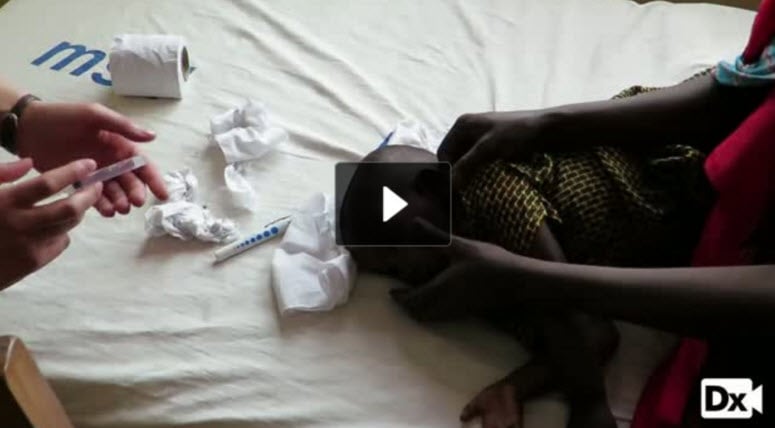A foreign body in the ear is any object that gets stuck in the ear canal. This can include anything from small objects like beads and toys to insects and food particles.
- Patients may be asymptomatic or present with otalgia, hearing loss, bleeding, and discharge from the ear
Diagnosis is made by history and physical exam with visualization of foreign body
- Foreign bodies can sometimes be difficult to visualize, so a normal-appearing exam does not exclude their presence
Removal should be attempted under direct visualization using warm irrigation with a syringe or instruments like an alligator forceps or a right-angle hook
- Insects must be immobilized prior to removal ⇒ Drown insects with mineral oil or viscous lidocaine before attempting removal
- Irrigation of the external ear can be uncomfortable for a child. Aggressive flushing can cause perforation of the tympanic membrane, so caution is advised while irrigating
- After each flush, it is prudent to recheck the external canal for retained foreign body fragments, which can occur with an insect
- After irrigation, if the child is uncomfortable, consider treating with topical pain agents such as benzocaine-anti-pyrene
- Referral to ENT is recommended if removal attempts are unsuccessful
Question 1 |
A 4 year-old boy presents with pain and irritation of his left ear. Otoscopic examination reveals an insect in the left auditory canal. The tympanic membrane is not completely visualized. Which of the following is the most appropriate management of this patient?
Debrox insertion with suction removal Hint: Debrox is used for cerumen impaction not foreign body removal. | |
Irrigation with room temperature saline Hint: Irrigation with room temperature saline is useful for small particle removal only if the tympanic membrane is well-visualized and without perforation. It is not indicated in the removal of an insect. | |
Insertion of 2% lidocaine solution with suction or forceps removal | |
Polymyxin drop insertion via wick Hint: Polymyxin B is indicated in otitis externa and administered via a wick when there is significant edema of the auditory canal. It is not indicated in the removal of a foreign body. |
Question 1 Explanation:
Two percent lidocaine solution will paralyze the insect and provide topical anesthesia for suction or forceps removal.
Question 2 |
A frantic mother of a 2-year-old toddler reports her child put a small bead in his ear during playtime. She tried to remove it herself but was unsuccessful.Which of the following factors in this scenario most significantly increases the risk of complications?
The child is under 3 years old Hint: Young children are a common age group, but the act of tampering itself creates the most substantial risk. | |
The foreign object is an organic material (bead) Hint: While some objects (button batteries, insects) have risks unique to their type, the attempted removal is the more important concern. | |
The mother attempted to remove the object | |
Foreign body has been present for less than 24 hours Hint: Longer durations can increase otitis externa risks, but the immediate concern is damage from extraction efforts. | |
The child is uncooperative for an ear exam Hint: This makes management more challenging, but extraction without appropriate visualization creates greater potential harm. |
Question 2 Explanation:
Unskilled attempts at foreign body removal are the primary risk factor for complications. This can introduce the object further into the ear canal and cause trauma to delicate structures, creating the potential for ear canal laceration, perforation of the tympanic membrane, or middle ear damage.
There are 2 questions to complete.
|
List |



